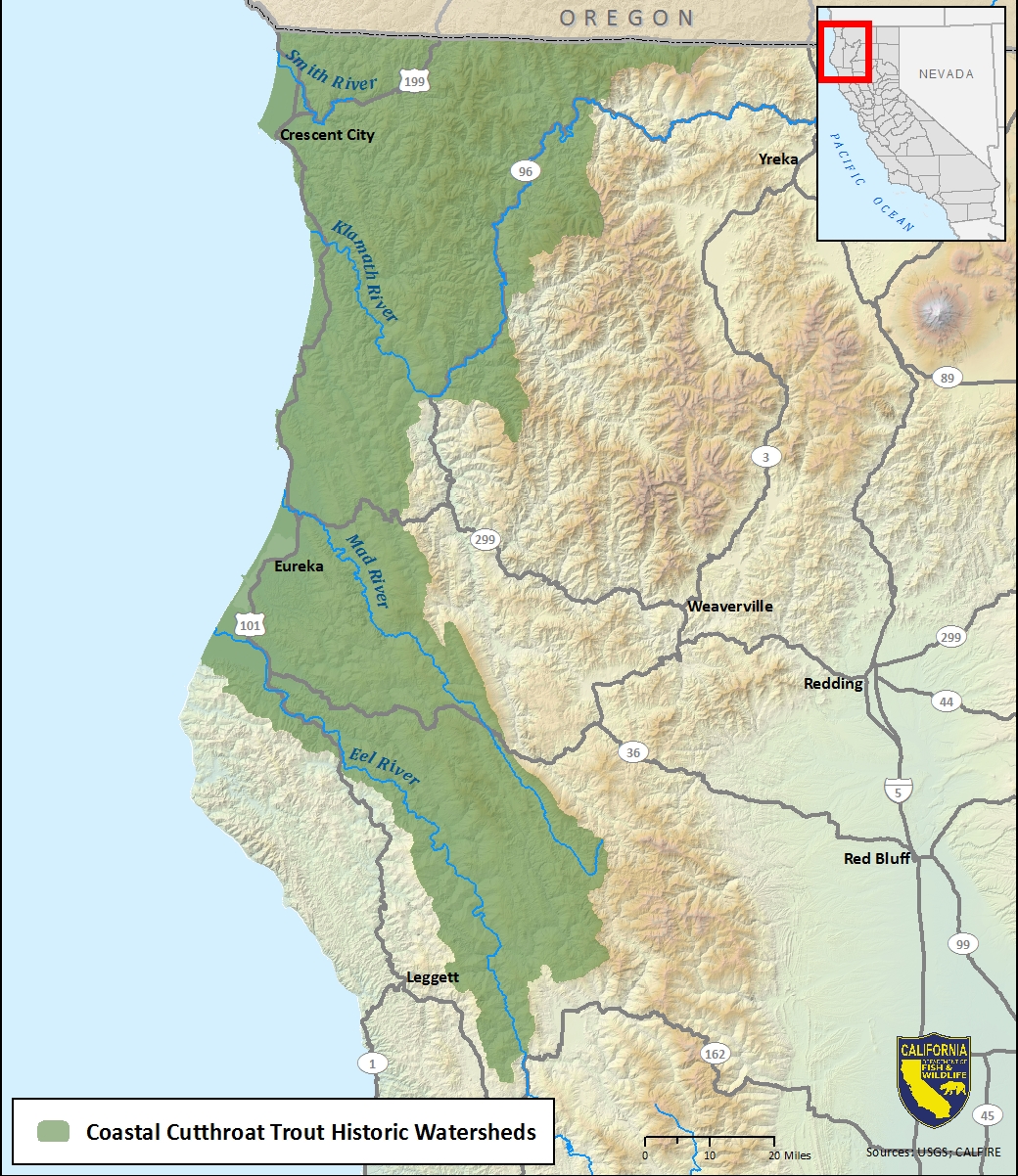Identification
Similar in appearance to coastal rainbow trout, except:
- More body spots, particularly below the lateral line, and sometimes heavy spots on paired and anal fins.
- More slender-bodied.
- Large head with characteristic red, orange, or yellow slashes under the jaw.
- The maxillary typically extends past the eye, even in smaller-sized cutthroat trout.
Mature fish in freshwater have a dark copper/brass appearance, sometimes with iridescent hues. Coastal cutthroat trout and coastal rainbow trout have similar habitat requirements and can naturally hybridize, making identification difficult.
Distribution
- Overall range is large: along the Pacific Coast from the Eel River in California north to coastal rainforests in Alaska.
- In California, coastal cutthroat trout are at the southern edge of their range
- Found in Humboldt Bay tributaries, numerous lagoons and ponds, and large stream systems such as the Smith, Mad, and lower Klamath rivers.
- They prefer small, low-gradient coastal streams, estuaries, and lagoons with cool, clean water, ample cover, and deep summer holding pools.
 South Fork Smith River.
South Fork Smith River.
 (click to enlarge)
(click to enlarge)
Angling
Due to their migratory behavior, large coastal cutthroat trout can be captured in streams and rivers when steelhead and salmon have migrated to the ocean. Adults in freshwater feed on benthic macroinvertebrates, terrestrial insects, and small fish. During winter, coastal cutthroat trout eat earthworms washed in by winter storms. In the marine environment, crustaceans and fish are the standard fare.
Stream Fishing
- Target pools or slower-moving habitat with fallen logs and undercut banks.
- Lures or small streamers on sink tip lines may work better than dry flies or nymphs that tend to catch more coastal rainbow trout.
- Drift the streamer or lure toward cover and then strip or reel it away.
- Trail a small nymph behind the streamer.
- Drifting or stripping large terrestrial insect patterns may also be successful.
- Or, target smaller creeks in which coastal cutthroat trout are the only trout present. The fish may be smaller, but the likelihood of catching a cutthroat is higher and dry flies can be quite successful.
Lagoons and Estuaries
- Tend to have larger coastal cutthroat trout that typically stay on the move, looking for prey such as crustaceans or smaller ocean fish.
- Cover lots of water by trolling with a streamer or small lure.
- Or, try fishing near river mouths for those trout foraging on food drifting or swimming downstream.
- Timing is important and good fishing periods are often associated with out-migrating salmon and steelhead fry.
 Hurdygurdy Creek.
Hurdygurdy Creek.
 Mill Creek.
Mill Creek.